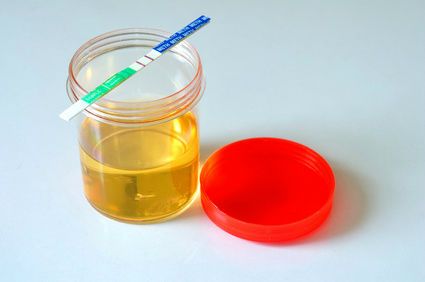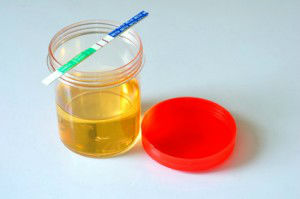
During your lifetime, your kidneys will work very hard to filter over one million gallons of water. Urine is about 95% water and 5% uric acid, the stuff that your body does not need – including minerals, enzymes and salts that are dangerous if they accumulate in your body.
Urine can fluctuate in color and odor depending on what you are eating and drinking, how active you are, the time of day or what supplements you are taking. However, urine color and odor can also be an indication of something more serious.
Would you have ever thought that great things could be learned from your pee? Urine should be pale yellow or clear – not glow-in-the-dark yellow or dark yellow. It should not be cloudy or have a knock-you-over odor unless you have been eating asparagus! Anything apart from the clear and odorless could be a sign of trouble.
Urine is made up of excess water and waste that your kidneys have filtered. Urochrome, a pigment found in blood, gives urine its natural light yellow tone. Depending on how hydrated you are, you urine color can fluctuate from clear to darker yellow or even orange tinted.
Here is a quick pee primer to fill you in on what you should look for and what your pee may be telling you.
Super Clear Urine
Yep, there is such a thing as urine that is too clear. If your urine is super clear it may mean that you are drinking too many fluids. Be careful not to over-hydrate. The best rule of thumb is to aim for half of your body weight in ounces each day.
This means, if your weight is 120 pounds, you should be drinking 60 ounces of water per day. More serious conditions such as acute viral hepatitis or cirrhosis can also cause your pee to turn very clear. However, you will also have other symptoms such as skin yellowing, nausea or vomiting with these conditions.
Neon Yellow Urine
Glowing yellow urine may be the result of excess vitamins that are not being absorbed by your body. It is best to stick to whole food supplements that your body can absorb.
Golden Urine
Not everything that’s golden is great, especially golden pee. When your urine is dark yellow or gold it generally means only one thing; you are dehydrated. This can be the result of excessive exercise, heat or sickness. Up your water intake and see if the dark yellow color fades away. If the color persists or you have other symptoms, see a physician.
Dark Brown Urine
Dark brown or tea-colored urine can be an indication of a liver condition, especially if this is accompanied by a yellow complexion or pale-colored stools. Consult your physician if you suspect a liver problem.
The color can also come as a side effect of medication. Be sure to check the labels of your medication and ask your doctor what to expect with the medication you are taking.
Orange Urine
Eating too many red or orange foods such as berries and beets can cause your urine to turn a shade of orange. Orange-colored urine may also be a side effect from medication. Be sure you know all of the side effects of the medication you are taking and speak to your doctor if the urine color persists.
Blue Urine
Asparagus and other foods that may be artificially colored can turn your urine a greeny blue color. Medications can also cause this to happen. Be sure to speak with your physician if you feel that your urine is colored from medication.
Red or Pink Urine
Blood in the urine from a bladder or kidney infection may cause your urine to turn pink or red. A bladder or kidney infection is generally accompanied by low back pain, urinary urgency and lower abdominal pain.You may also have a fever.
If you suspect a bladder or kidney infection, see a doctor immediately. Urine can also turn reddish pink in color if you eat too many foods that have dark pigments such as beets, rhubarb or blackberries. Iron supplements can also tint your urine pink or red.
Cloudy Urine
If you are having low back pain, lower abdomen pain or urinary urgency combined with cloudy urine, see a physician. Cloudy urine may also be the result of kidney stones, generally accompanied by great pain.
A Note About Odor
Normal urine should not have a strong odor, but there are also many substances that can alter the way your pee smells. Urine is the reflection of what is going on inside of your body and contains many metabolic by-products and compounds. Some dogs are even able to “smell cancer” in humans.
If your urine has a very pungent aroma, like ammonia, it could be an indication of a urinary infection, urinary stones or a sign of dehydration. Because dehydration causes urine to become concentrated, it will have a stronger than usual odor. According to MDHealth.com, menopause, some sexually transmitted diseases and certain metabolic conditions can also increase the ammonia smell.
 Other reasons for a change in urine odor include:
Other reasons for a change in urine odor include:
- Medications and supplements; some may change the color of urine
- Diet – certain foods such as asparagus cause urine to smell foul; and
- Diabetes – can cause urine to smell fruity or yeasty.
The most important thing to remember when checking your urine color is that it can change to a myriad of colors due to a number of factors. Just knowing what normal urine should look and smell like provides a useful measuring tool. See a physician if your urine changes color and the color persists or is accompanied by other symptoms.
Remember, drink your water!
-The Alternative Daily
Sources:
http://www.webmd.com/urinary-incontinence-oab/features/the-truth-about-urine

